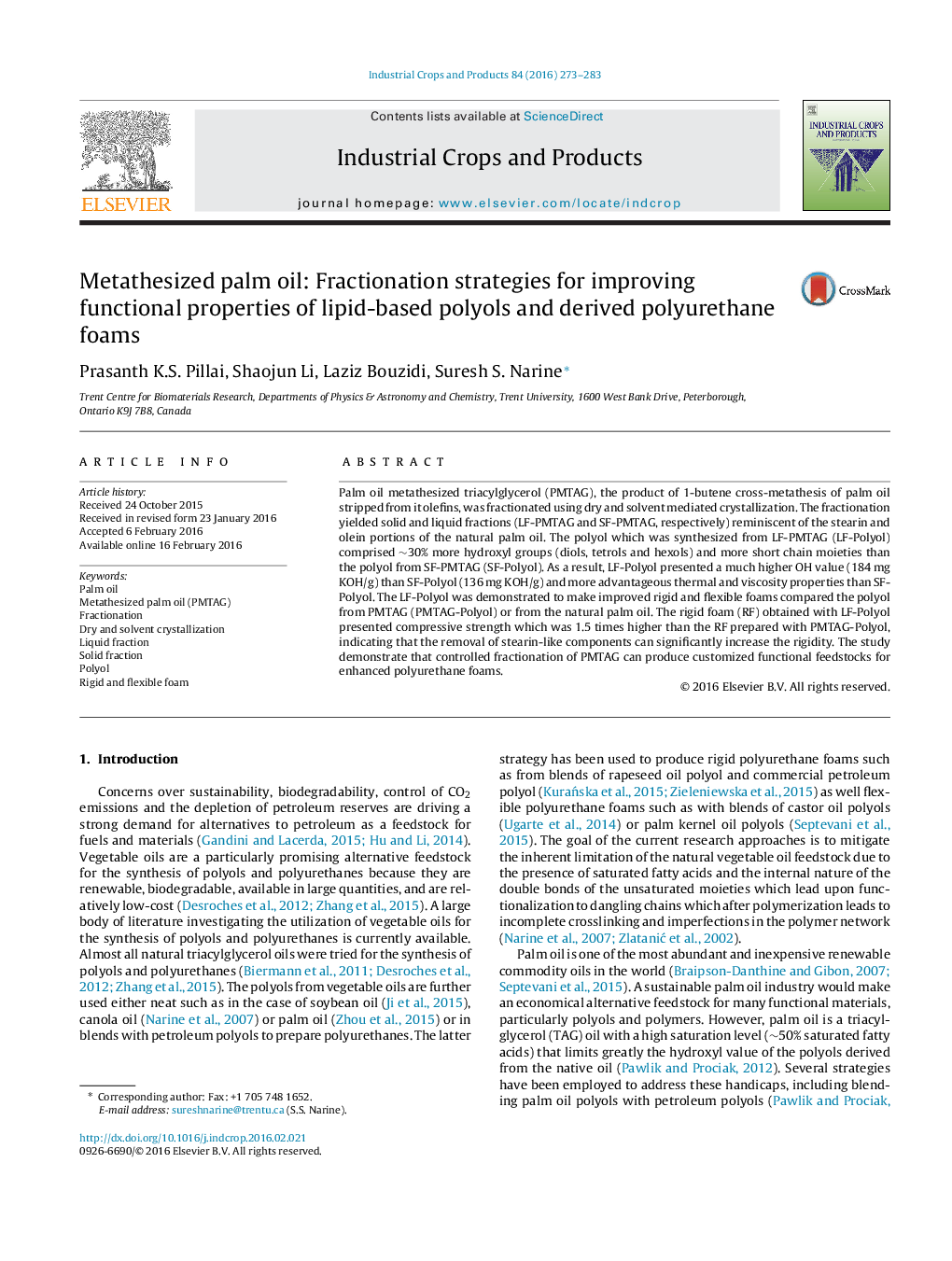| Article ID | Journal | Published Year | Pages | File Type |
|---|---|---|---|---|
| 4512421 | Industrial Crops and Products | 2016 | 11 Pages |
•Fractionation of metathesized palm oil yielded olein and stearin like portions.•Custom polyols with high hydroxyl value and terminal hydroxyl obtained.•Liquid fraction polyol (LF-Polyol) yielded both rigid and flexible foams.•LF-Polyol foams are suitable for structural and thermal insulation applications.•Rigid and flexible foams with improved mechanical properties were obtained.
Palm oil metathesized triacylglycerol (PMTAG), the product of 1-butene cross-metathesis of palm oil stripped from it olefins, was fractionated using dry and solvent mediated crystallization. The fractionation yielded solid and liquid fractions (LF-PMTAG and SF-PMTAG, respectively) reminiscent of the stearin and olein portions of the natural palm oil. The polyol which was synthesized from LF-PMTAG (LF-Polyol) comprised ∼30% more hydroxyl groups (diols, tetrols and hexols) and more short chain moieties than the polyol from SF-PMTAG (SF-Polyol). As a result, LF-Polyol presented a much higher OH value (184 mg KOH/g) than SF-Polyol (136 mg KOH/g) and more advantageous thermal and viscosity properties than SF-Polyol. The LF-Polyol was demonstrated to make improved rigid and flexible foams compared the polyol from PMTAG (PMTAG-Polyol) or from the natural palm oil. The rigid foam (RF) obtained with LF-Polyol presented compressive strength which was 1.5 times higher than the RF prepared with PMTAG-Polyol, indicating that the removal of stearin-like components can significantly increase the rigidity. The study demonstrate that controlled fractionation of PMTAG can produce customized functional feedstocks for enhanced polyurethane foams.
Graphical abstractFigure optionsDownload full-size imageDownload as PowerPoint slide
